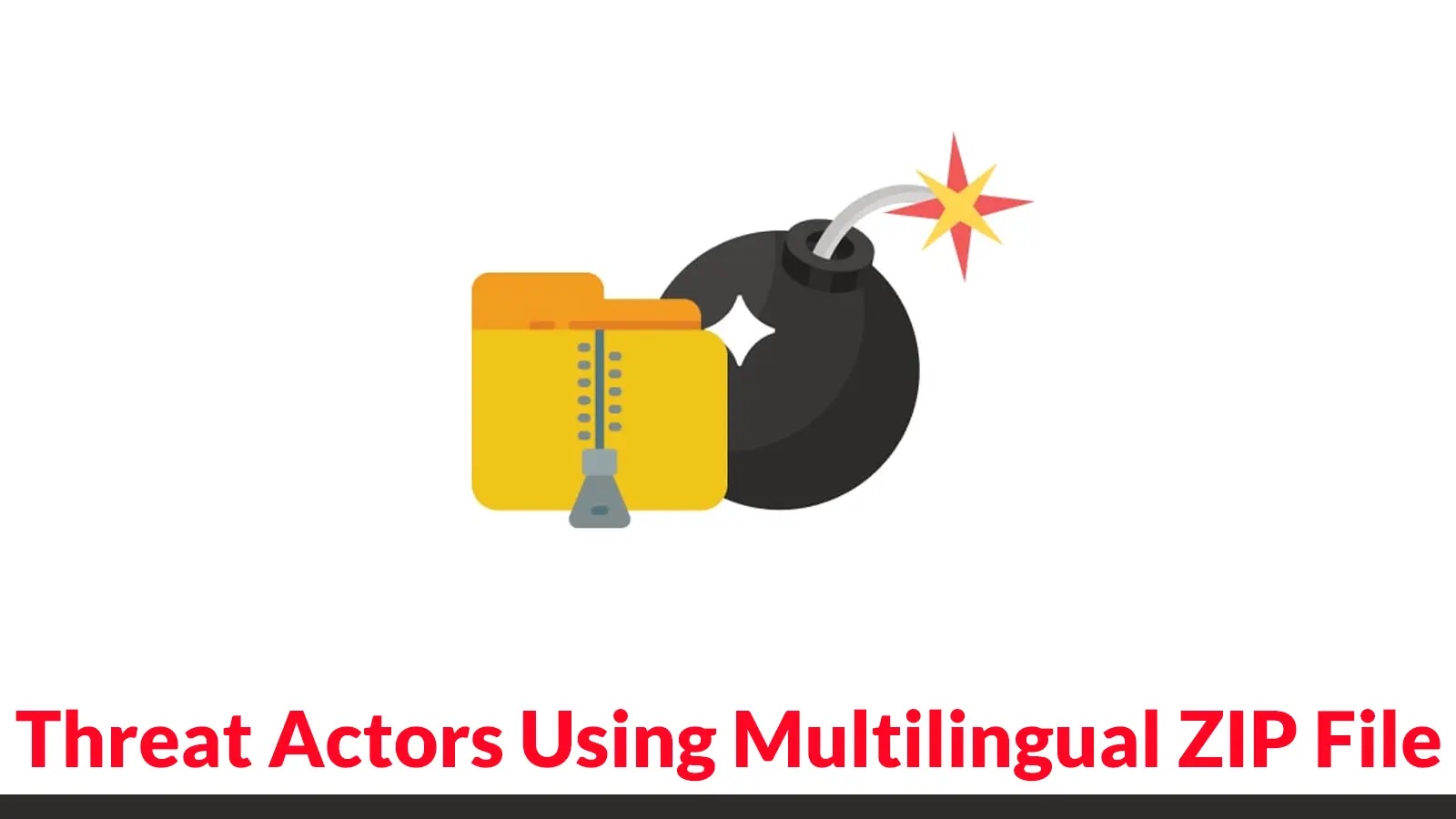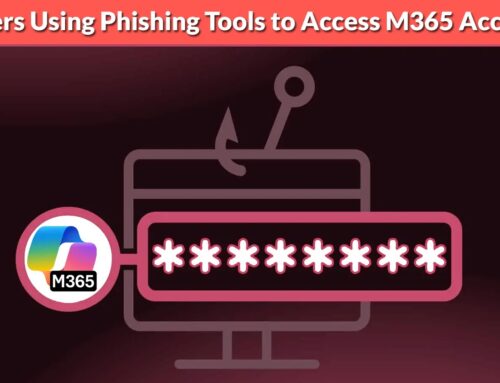
Threat Actors Using Multilingual ZIP File to Attack Financial and Government Organizations
The digital landscape is a constant battleground, and sophisticated threat actors continually refine their tactics. A recent alarming development involves a coordinated multilingual phishing campaign specifically targeting vital financial and government organizations across East and Southeast Asia. These attacks leverage meticulously crafted ZIP file lures and region-specific web templates, masquerading as legitimate communications to deploy staged malware droppers. This intricate operation highlights the evolving nature of cyber threats and the critical need for robust defense mechanisms.
The campaign’s complexity is significant, with recent analysis revealing three interconnected clusters operating in Traditional Chinese, English, and Japanese-language variants. This level of linguistic and cultural tailoring underscores the threat actors’ dedication to maximizing their success rate within specific target demographics. Understanding these methods is paramount for cybersecurity professionals tasked with protecting critical infrastructure and sensitive data.
The Multilingual Lure: A Deep Dive into Deception
Threat actors are increasingly employing psychological manipulation through highly customized phishing schemes. In this campaign, the use of multilingual ZIP files goes beyond simple translation; it involves a nuanced understanding of cultural contexts and organizational communication styles specific to East and Southeast Asian countries. The phishing emails are designed to appear authentic, often impersonating financial institutions or government agencies, and the attached ZIP files contain malicious executables disguised as legitimate documents.
The malicious ZIP archives are not merely containers for the final payload. Instead, they act as an initial access vector, deploying “staged malware droppers.” These droppers are small, seemingly innocuous programs whose primary function is to download and execute more potent malware from a command-and-control (C2) server. This multi-stage approach allows threat actors to bypass some initial security checks and dynamically adapt their attack based on the target environment.
Geographic and Sectoral Targeting
The focus on financial and government organizations in East and Southeast Asia indicates a strategic intent to acquire high-value data, disrupt critical services, or engage in espionage. Financial institutions are targeted for monetary gain and access to sensitive client information, while government entities are often targeted for intelligence gathering or to compromise national security. The region’s diverse linguistic landscape makes the multilingual approach particularly effective, exploiting a common vulnerability: human trust.
The specific regions targeted suggest an awareness of geopolitical interests and economic factors. The seamless integration of Traditional Chinese, English, and Japanese into the campaign toolkit demonstrates an advanced level of operational planning and resource allocation by the threat actors. This broad linguistic coverage allows the attackers to cast a wider net and increase their chances of compromising diverse targets within the region.
Analysis of Attack Clusters
The identification of three distinct yet interconnected clusters is a critical insight. While each cluster features a predominant language, there is often an overlap in the underlying infrastructure or TTPs (Tactics, Techniques, and Procedures). This suggests a central orchestrator or a highly collaborative group of attackers. Analyzing these clusters involves:
- Language-Specific Phishing Templates: Emails and malicious documents crafted with perfect grammar and culturally relevant references in Traditional Chinese, English, and Japanese.
- Geographically Optimized C2 Infrastructure: Command-and-control servers strategically located or configured to blend in with regional network traffic, making detection harder.
- Adaptive Malware Droppers: Initial executables that may vary slightly in their obfuscation or anti-analysis techniques depending on the target’s perceived security posture within each linguistic group.
Understanding these subtle variations across clusters is crucial for developing targeted defense strategies. Generic defenses may not be sufficient against such sophisticated and tailored attacks.
Remediation Actions and Proactive Defenses
Combating such sophisticated, multilingual phishing campaigns requires a multi-layered approach focusing on both technical controls and human awareness. Here are key remediation actions and proactive defense strategies:
- Enhanced Email Security Gateways: Implement advanced email security solutions capable of detecting malicious attachments, even within compressed files like ZIP, through sandboxing, heuristic analysis, and behavioral detection. Ensure these systems are regularly updated with the latest threat intelligence.
- Endpoint Detection and Response (EDR): Deploy EDR solutions across all endpoints to monitor for suspicious activities, such as unexpected script execution, unusual network connections, or unauthorized process creation. EDR can identify and respond to staged malware droppers before they can fully compromise a system.
- Security Awareness Training: Conduct regular, comprehensive, and culturally relevant security awareness training for all employees. Emphasize the dangers of phishing, how to identify suspicious emails (especially those with attachments), and the importance of reporting anomalies. Training should include specific examples of the types of lures used in this campaign.
- Network Segmentation: Implement strong network segmentation to limit the lateral movement of threat actors within the network if an initial compromise occurs. This can contain damage and prevent widespread infection.
- Principle of Least Privilege: Enforce the principle of least privilege for all user accounts and applications, limiting their access to only the resources necessary for their functions. This reduces the blast radius of a successful compromise.
- Patch Management: Maintain a rigorous patch management program to ensure all operating systems, applications, and security software are up-to-date, addressing known vulnerabilities.
- Incident Response Plan: Develop and regularly test a comprehensive incident response plan. This plan should include detailed steps for detection, containment, eradication, recovery, and post-incident analysis specific to sophisticated phishing and malware attacks.
Relevant Tools for Detection and Mitigation
Leveraging the right cybersecurity tools is critical for defending against advanced threats. Below is a table of categories and examples of tools that can aid in detection and mitigation:
| Tool Category | Purpose | Example Tools / Link |
|---|---|---|
| Email Security Gateway | Advanced phishing and malware detection, sandbox analysis for attachments. | Microsoft Defender for Office 365, Proofpoint, Mimecast |
| Endpoint Detection & Response (EDR) | Real-time threat detection, investigation, and response on endpoints. | CrowdStrike Falcon, Carbon Black, SentinelOne |
| Security Information and Event Management (SIEM) | Centralized logging, correlation of security events, anomaly detection. | Splunk, IBM QRadar, Elastic SIEM |
| Vulnerability Management Solutions | Identify and prioritize vulnerabilities across the IT infrastructure. | Tenable.io, Qualys, Nexpose |
| Threat Intelligence Platforms (TIP) | Aggregate and contextualize threat data to inform defenses. | Recorded Future, Anomali, MISP |
Conclusion
The multilingual ZIP file campaign targeting financial and government organizations underscores the persistent and evolving nature of cyber threats. Threat actors are investing significant resources to develop sophisticated, culturally tailored attacks that bypass traditional defenses. The coordinated nature of these “interconnected clusters” of attacks signifies a highly organized adversary. Organizations must recognize that effective cybersecurity is not merely about implementing technical controls; it requires continuous vigilance, comprehensive employee training, and a proactive posture supported by up-to-date threat intelligence. By adopting robust security practices and fostering a culture of cybersecurity awareness, organizations can significantly enhance their resilience against these advanced persistent threats.





